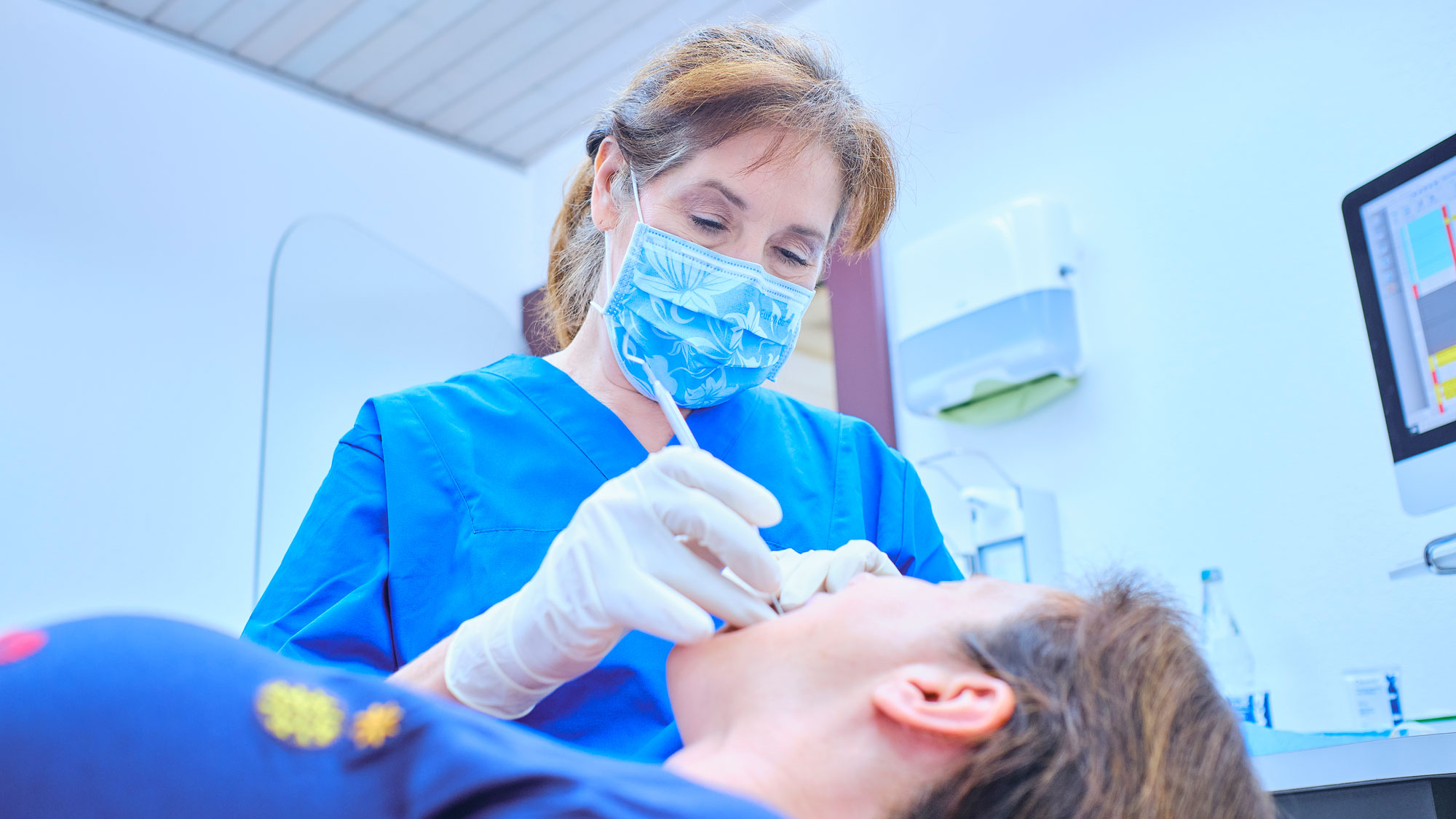Preventive dental care
Prevention of caries and periodontitis
Few areas of medicine offer such effective disease prevention as dentistry. The best part is that it requires minimal effort: You come to the practice twice a year for approximately one-hour preventative care sessions, possibly followed by a checkup.
If you have high-risk conditions, such as dry mouth (due to medications such as beta-blockers or antihypertensives) or type 2 diabetes, the interval between sessions may need to be shortened.
The effect on your oral health
Even if you’re very good at brushing your teeth, about a third of all tooth surfaces will still have plaque after brushing at home. That’s quite a lot.
This means that the plaque remains on these tooth surfaces. This involves a developmental process. Initially, the plaque contains essentially harmless bacteria, except for one: Streptococcus mutans, which we call SM for short. This bacterium converts carbohydrates and sugar into lactic acid, which demineralizes the teeth. We call this process caries!
All bacteria in the first three months after a prophylaxis (cleaning) session think they are completely alone in the world.
From month four, the bacteria begin to communicate with each other. This communication doesn’t just take place between the same bacteria; it goes so far that everyone talks to everyone else. This was discovered by Prof. Dr. Bonnie Bassler… you’ll find the link to further information below.
With communication between the bacteria, they begin to organize themselves. They build pathways like blood vessels, communication pathways like nerves, etc. We call this structure a biofilm.
With so many bacteria, oxygen deprivation increases, so that even bacteria that can survive without oxygen feel comfortable. This is precisely the problem in dentistry, especially for the occurrence of periodontitis.
The big point in prophylaxis
The key to success is the complete removal of the biofilm, which is theoretically not difficult, as it’s a soft coating. However, you have to reach every nook and cranny in the dentition. That requires truly excellent skills and the will to never give up when things get difficult. And they almost always do.
How to remove deposits
In our practice, we make it a priority to remove as much plaque as possible with hand instruments. However, this requires particularly trained dexterity and a far superior sense of touch.
If plaque, such as dental plaque, is particularly thick, we may occasionally need to use an ultrasound device to assist.
Smoker’s plaque and stain is usually removed with polishing paste and a rotating rubber cup. We rarely resort to airflow, which is similar to sandblasting. It looks simple, but it also has its challenges, which is why it’s the exception rather than the rule for us.
What you should do now
If you want to join the winning side, then visit your dentist regularly for preventative care. They’ll also explain your weaknesses when brushing your teeth (dentists have these too!) and what you can do better. And this won’t be explained to you by a health column in the newspaper, but by someone who knows the subject inside out!
Author: drw
If you want to know more about the topic, I recommend the following links:
How bacteria “talk” to each other:
About Prof. Dr. Bonnie Bassler:

